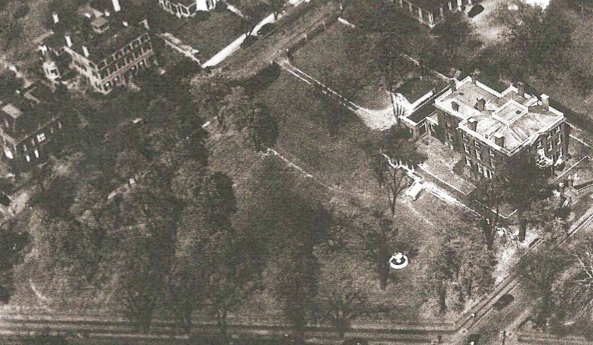
Summary of JBH Unit 12:
Here is the main image from the right half of the bottom shelf of the Rhode Island Hall basement exhibit. This half of the shelf represents the work done at Unit 12. The location for this site is the closest to the John Brown House, located right near the Southwestern corner. The students chose this site because of their curiosity about the image above. This is a historic aerial image of the property where a fountain is visible, but there are not records of it. They noticed at the bottom of the hill that there was a modern drainage pipe, and the location they had was very similar to that in the photo. They however did not find any remains related to the fountain, but did find a historical drain. According to the new maps made this year by Max Mankin and Eva Schwartz, they were very close to the actual location of the fountain. They also realized that there was a modern pipe that went through half of their site, which meant that the soil had been disturbed and they could only use half of their 2x2 meter plot.
To learn more about the history of the site, its use, and items not displayed here, please read the Unit 12 excavation summary and interpretation by Brandon Tomasso in the 2010 JBH site report.
Images from Panel
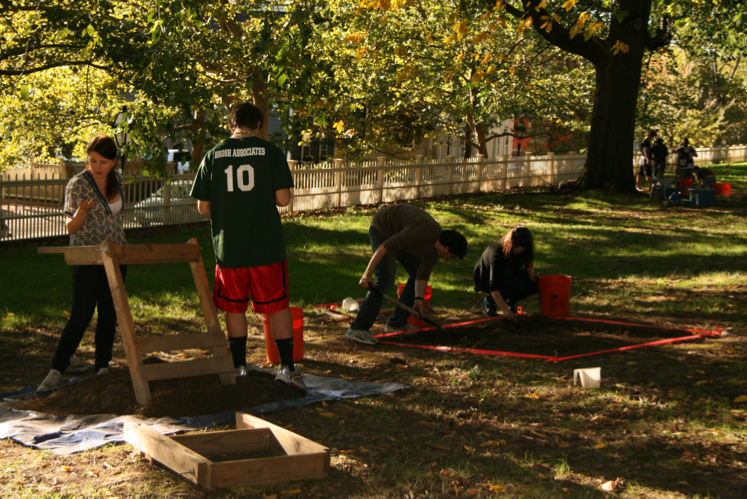
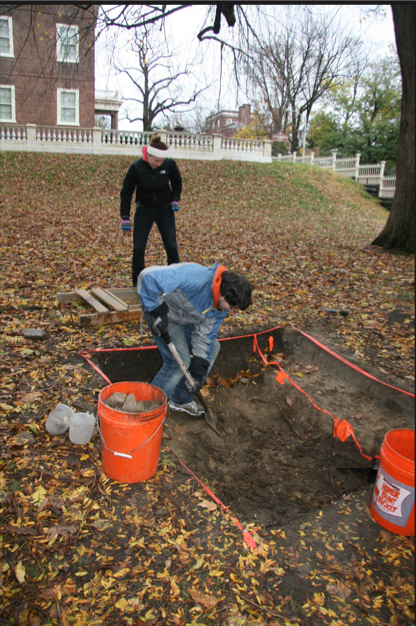
In this image you can see all of the members of Unit 12. Olivia Petrocco'13 is working the sift along with Brandon Tomasso'13. Max Mankin'11 is shoveling and Cindy oh is using the trowel to clean up the walls of their 2x2 meter unit. Beside that is an image of Max Mankin digging in the unit. This photo shows where the unit had to mark of part of their site because of modern lines running through it. The cold and difficult the weather made it to work. Also, this image shows just how close to the actual house the Unit was to the JBH itself. Working under the shadow of such a historic and beautiful home was a great reminder of the past we were digging up.
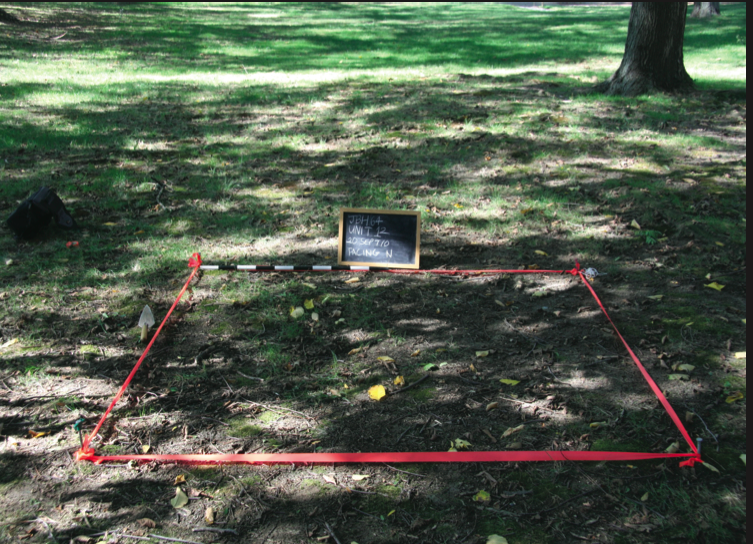 This image shows the first day before digging had begun at Unit 12. The unit looks arbitrary and does not indicate that there will be anything there. However, this site was carefully chosen by the members of the class, and turned out to be a great location for finding artifacts. There was a dead mouse on the surface of the site which the students decided not to keep as part of their archaeological record.
This image shows the first day before digging had begun at Unit 12. The unit looks arbitrary and does not indicate that there will be anything there. However, this site was carefully chosen by the members of the class, and turned out to be a great location for finding artifacts. There was a dead mouse on the surface of the site which the students decided not to keep as part of their archaeological record.
Additional Images of Unit 12
Quotes come from students' Field Blogs
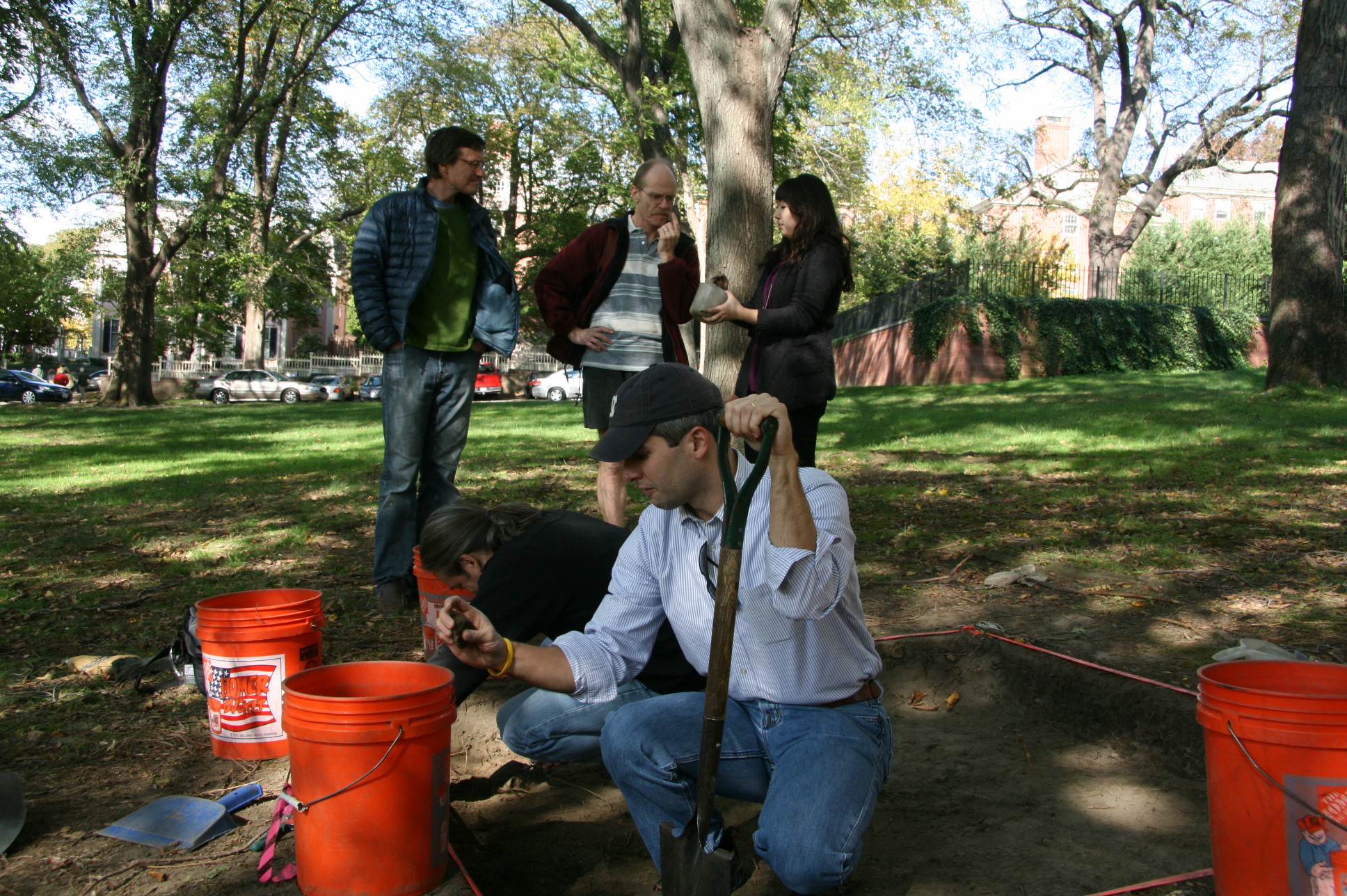 "Today we opened up the site to visitors here at Brown for Family Weekend. I was the only one from our group present so I answered most of the questions the visitors asked about our unit. Generally, they were interested in why we chose to put our unit where it is and the kind of artifacts we've found so far. I think we had a nice number of visitors and it was exciting to see that they were genuinely interested in what we were doing!"-Cindy Oh Oct. 23, 2010
"Today we opened up the site to visitors here at Brown for Family Weekend. I was the only one from our group present so I answered most of the questions the visitors asked about our unit. Generally, they were interested in why we chose to put our unit where it is and the kind of artifacts we've found so far. I think we had a nice number of visitors and it was exciting to see that they were genuinely interested in what we were doing!"-Cindy Oh Oct. 23, 2010
 "This week was our second to last week in the field. I began class by completing my total station survey of the property. We mapped in the boundaries of each of the units, finished a topographical survey, and outlined the parking lot. I did my best to walk in a nice grid during the survey, but I guess we’ll find out just how good my grid was once we plug the results into a computer for visualization. We also mapped in some manhole covers on the surrounding streets so we could eventually georeference historical maps. In the process of doing so, Jessica and I met a nice older gentleman who lived and grew up in the house on the SW corner of Benefit and Planet Streets about 50 years ago. He was very interested in what were up to and told us that the streets hadn’t been widened or moved for at least 50 years. He also told us that Stonewall Jackson, of Civil War fame, lived in the house across the street from his on the NW corner of Benefit and Planet. Eventually, it got too dark for Jessica, who was aiming the total station’s laser, to see the prism on the mobile post, so we had to quit. We hadn’t quite finished at that point so we went out yesterday (Thursday) to finish outlining the parking lot and mapping the walls in unit 11."-Max Mankin Nov. 15, 2010
"This week was our second to last week in the field. I began class by completing my total station survey of the property. We mapped in the boundaries of each of the units, finished a topographical survey, and outlined the parking lot. I did my best to walk in a nice grid during the survey, but I guess we’ll find out just how good my grid was once we plug the results into a computer for visualization. We also mapped in some manhole covers on the surrounding streets so we could eventually georeference historical maps. In the process of doing so, Jessica and I met a nice older gentleman who lived and grew up in the house on the SW corner of Benefit and Planet Streets about 50 years ago. He was very interested in what were up to and told us that the streets hadn’t been widened or moved for at least 50 years. He also told us that Stonewall Jackson, of Civil War fame, lived in the house across the street from his on the NW corner of Benefit and Planet. Eventually, it got too dark for Jessica, who was aiming the total station’s laser, to see the prism on the mobile post, so we had to quit. We hadn’t quite finished at that point so we went out yesterday (Thursday) to finish outlining the parking lot and mapping the walls in unit 11."-Max Mankin Nov. 15, 2010
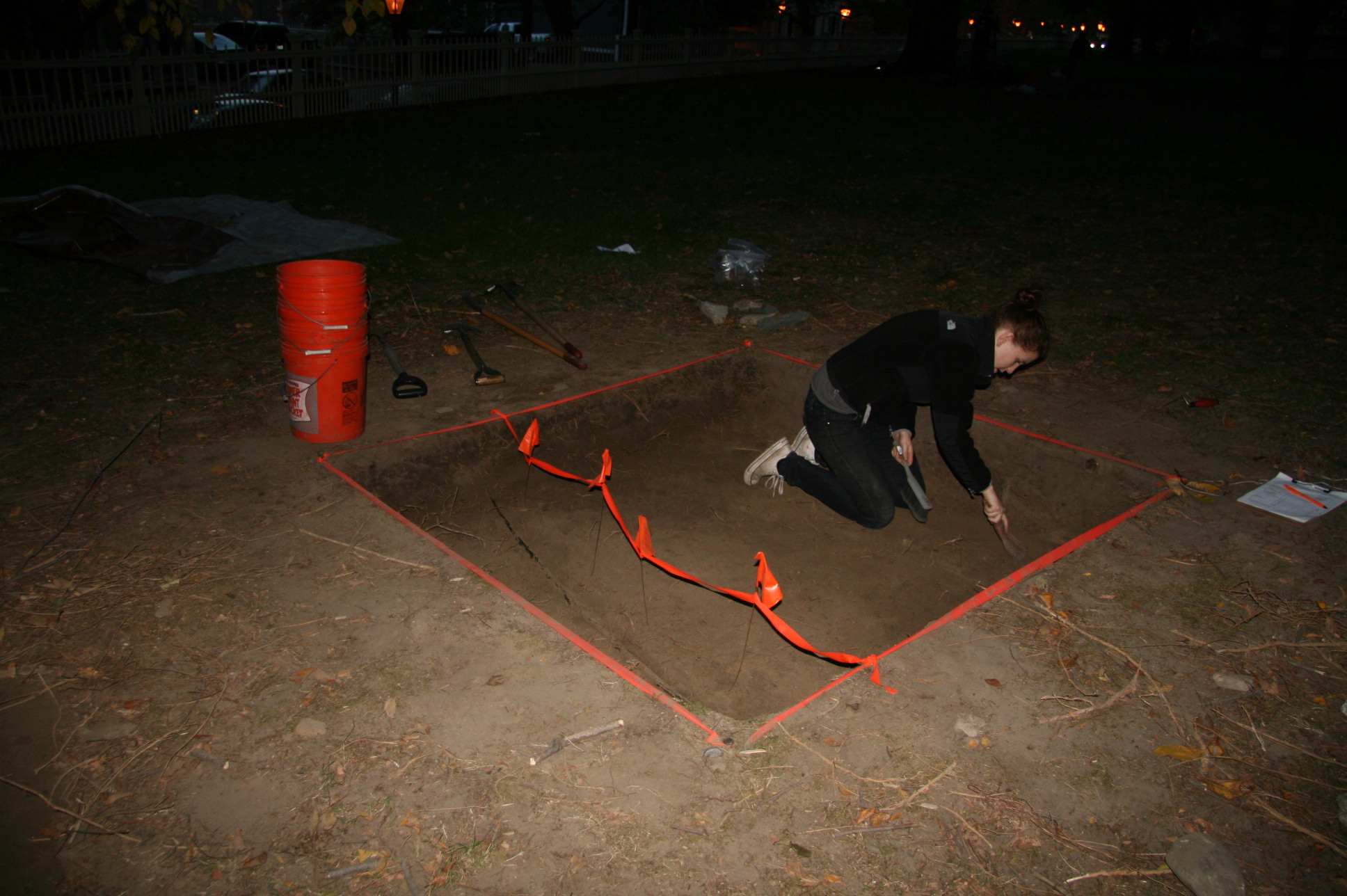 Today we hit the ground running and dug like there was no tomorrow.We are uncovering lots of mortar in the context, but there are no emerging patterns that would suggest we are uncovering any structures. However, we continued to unearth more glass, ceramics, bricks, nails, and charcoal. We also found a large animal tooth. Our ceramic shards became more diverse this week, as we discovered patterns that were pink, both blue and green, green, and plain black. Also, we discovered a portion of a bottle neck, and a larger glass shard with the letters DYE. Next week, we will dig like there is no tomorrow, and see how much we can get out of Unit 12 before we are forced to backfill. It is getting too cold."-Olivia Petrocco Nov. 1, 2010
Today we hit the ground running and dug like there was no tomorrow.We are uncovering lots of mortar in the context, but there are no emerging patterns that would suggest we are uncovering any structures. However, we continued to unearth more glass, ceramics, bricks, nails, and charcoal. We also found a large animal tooth. Our ceramic shards became more diverse this week, as we discovered patterns that were pink, both blue and green, green, and plain black. Also, we discovered a portion of a bottle neck, and a larger glass shard with the letters DYE. Next week, we will dig like there is no tomorrow, and see how much we can get out of Unit 12 before we are forced to backfill. It is getting too cold."-Olivia Petrocco Nov. 1, 2010
